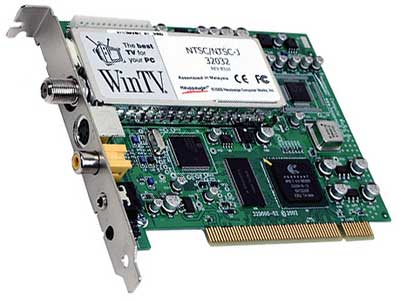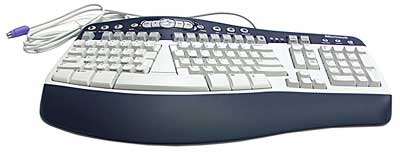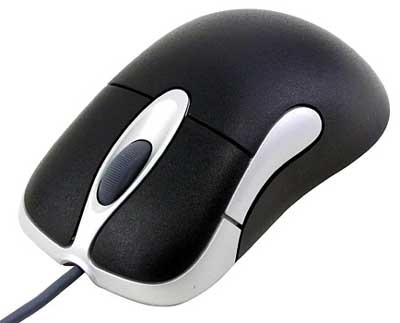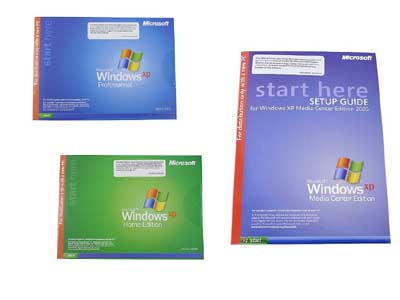Buyer's Guide - Mid-Range, October 2004
by Jarred Walton on October 21, 2004 11:00 AM EST- Posted in
- Guides
Miscellaneous Parts
Our computer system is complete, with the exception of a few small items as well as some optional components. We will cover those here.Networking Recommendation: Integrated in motherboard
Price: Free
We did not mention it earlier, but it is almost impossible to find a modern motherboard that doesn't include a network adapter, and we feel no need to purchase a separate NIC as there is little to no performance difference in normal use. Some users might prefer WiFi networks, in which case, an add-in card is usually required, but we do not have any real recommendation on what to purchase in that segment. If you do use a wireless network, we would like to remind you to enable WEP encryption at the very least, and WPA is preferred, although not as easy to get working without spending more money.

Video Capture Alternative: Hauppauge PVR-250
Price: $128 Shipped (Retail)
Some of our readers have requested suggestions for a video capture device that would allow them to perform TiVo-like functions with their PC. We have had good experience with getting Hauppage's WinTV to function well, and feel comfortable recommending any of their products. The quick summary is that the low-end WinTV Go is a software encoding solution, so you will need more processor power if you choose it, but the systems that we have put together in this Guide are more than capable of handling that. The WinTV PVR-250 and PVR-350 include hardware encoding for MPEG1 and MPEG2, and the PVR-350 also adds video/audio pass through/output to your TV. Both also include a remote, which the WinTV Go lacks. We recommend the PVR-250 as an all-around good choice, as the graphics cards that we have chosen already include TV Out functionality, should you require it. The quality of the PVR-350 TV Output might be slightly better, however.
You can read our recent MythTV and Windows MCE articles on this subject for additional information. Remember to buy a larger hard drive or a secondary hard drive if you plan to use the PVR capability, as digital videos can eat up hard drive space rapidly. Also, the WinTV cards require a compatible VGA card that supports the overlay function, which typically means ATI or NVIDIA add-in cards. Other brands will also work, but we have not personally tested the cards with any integrated graphics configurations.

Keyboard Suggestion: Microsoft Natural Multimedia Keyboard PS/2
Price: $29 Shipped (OEM)

Mouse Suggestion: Microsoft IntelliMouse Optical
Price: $24 Shipped (OEM)
The choice of keyboard and mouse is a personal decision, so take these suggestions with a grain of salt. If you prefer something else, like a wireless version or something from Logitech or another company, then by all means - get it. What we list here is simply one possibility. It is worth mentioning that OEM parts usually require you to purchase other computer hardware, although many online companies define "hardware" very loosely. Retail versions of these devices can cost almost twice as much.
For the keyboard, heavy typists almost all agree that the split ergonomic keyboards are much more comfortable to use. As we do a lot of typing, we appreciate the value that Microsoft offers. The Natural Multimedia includes a more traditional arrow key layout, although the arrangement of the page up/down, home/end, and insert/delete keys is still different than other keyboards. The function keys also default to different behavior until you press the F-Lock key, which can be somewhat confusing, and unfortunately, the keyboard does not remember this setting when it's restarted. Those are minor complaints, though, and it doesn't take too long to adjust to the new arrangement. Microsoft keyboards are, not surprisingly, supported quite well out of the box on Windows XP. The power of a monopoly can be abused, true, but sometimes it is also very convenient.
Our mouse of choice is the IntelliMouse Optical, a slight step up from the base model 3-button Optical mouse. We like the ability to quickly go forward and backward when surfing web pages, and the tactile "click" of the mouse wheel is nice. The newer Microsoft mice with the tilting wheel do not have a click, and while some will prefer that style of mouse, we do not. Again, it's just one opinion on the subject, so try one out and buy what you like. You can also find some keyboard and mouse bundles that are cheaper than purchasing the two separately.

Operating System Suggestion: Microsoft Windows XP Home/Pro/MCE
Price: $95/$147/$140 Shipped (OEM)
While you can always install Linux on your new system, most users still go with Windows XP. If you want the legal route and save some money, we suggest that you purchase an OEM copy of Windows XP with the rest of your system. For those with home networks, we recommend the Professional version, but most people will not notice a difference between that and the Home edition. An interesting new development is that the Media Center Edition is also available at many online stores for about the same price as XP Pro. It is similar in features to XP Home with some added functionality relating to, amazingly enough, multimedia applications. The major difference is that a compatible hardware MPEG encoder is required. The Hauppauge PVR-250/350 that we mentioned above will work, of course.










54 Comments
View All Comments
filterxg - Tuesday, November 2, 2004 - link
I think this type of article is great. I may be in the market in the next 2 months and am reading up. Considering waiting until 64-bit XP comes out. But my Athlon 850 is on its last legs, and no news from Microsoft is bad news for me.JarredWalton - Tuesday, November 2, 2004 - link
I know what you mean on the tech support side. Problem is, even if I told my mom or whomever to buy a Dell, I *know* that I would end up doing the support. My mom wouldn't even know what the hell to say to a Dell support person. I laugh just thinking about it. (Yeah, I built her a PC so that she can get email. Now I get questions asking me why Juno doesn't work and sometimes crashes. Ugh.)Also, for those that were wondering about the choice of DVD+R, you can now see where I got the information for the NEC 3500A:
http://www.anandtech.com/storage/showdoc.aspx?i=22...
I had the Pioneer in originally, and Kris let me know in advance that the NEC was slightly preferred. Both are good drives, though, so it's not a decisive win in all areas. (Not like anyone is going to see the comment other than HH, but oh well.)
hh - Monday, November 1, 2004 - link
> HH - Hobbyist DIY vs. "regular" DIY? I don't> even know that I gave it that much thought.
It is merely something to consider.
>I actually find it fun to build new PCs.
Glad you enjoy it. My interest is to get on with it to using the PC, not the screwdriver-turning.
I'll still DIY if the cost savings potential is big enough to motivate...the problem is that that bar gets raised progressively higher as I have less free time. If the OEM price premium is less than 10-20%, I'll pay it in a heartbeat.
(Of course, this assumes ojbectively equal products, so we're back to system benchmarks questions).
>Having done plenty of support at companies that
>use Dell and other large OEM PCs, I wouldn't
>recommend them to an individual.
I know and undertand the frustration here. But we've already agreed that DIY's are not for the non-savvy PC user; my mother-in-law is a prime example...she's on dialup but can't figure out how to have the antivirus app do its updates.
>For businesses that can pay the extra $$$ for
>the support contracts, sure, go for it, but
>individual users? I just don't see OEMs as
>providing enough *quality* support to warrant
>my recommendation. YMMV.
The only thing worse than the OEM's are the "Armchair Expert" helpers. Based on their "expert" advice, Mom-in-Law just paid for a hard drive replacement to fix a spyware infection problem.
The frustrating part is that we both know that this failure mode is going to occur again. I'm tempted to convert her over to Apple to stop it, but that would cause a Family fight, especially since Sis-in-law doesn't want to have to admit that the spyware infections are being caused by her kids surfing on their Grandma's PC...
Pass me that bottle of Scotch, would you? :-)
-hh
JarredWalton - Friday, October 29, 2004 - link
HH - Hobbyist DIY vs. "regular" DIY? I don't even know that I gave it that much thought. I know that I personally would never go out and buy an OEM desktop system, but I'm probably far from your typical PC user. I actually find it fun to build new PCs. Having done plenty of support at companies that use Dell and other large OEM PCs, I wouldn't recommend them to an individual. For businesses that can pay the extra $$$ for the support contracts, sure, go for it, but individual users? I just don't see OEMs as providing enough *quality* support to warrant my recommendation. YMMV.BBurk: To get a "quiet" setup, the Antec 3700BQE is a great start. If you really want quiet, add in a Zalman CNPS7000A/B heatsink and fan, as it is again nearly silent. You could replace the PSU with one of the fanless Thermaltake or Antec models - only 350W, but that should suffice, I think. Both Seagate and Samsung make near-silent hard drives, although the latest WD, Maxtor and Hitachi really aren't any worse, I don't think. I just say avoid WD Caviar with non-FDB bearings. Also, if possible, look for a motherboard that doen't use a fan on the northbridge, and if you don't need the graphics power, get a graphics card that uses only a heatsink as well. That would make a system virtually silent, at the cost of some performance (especially on the graphics card).
hh - Thursday, October 28, 2004 - link
#48/JarredWalton>Actually, HH, shipping *was* included...
Sorry, I missed that detail.
> What you don't get are several upgrades that
> most hobbyists would like.
On the contrary. What you apparently missed is that I had very explictly and specifically differentiated DIY'er types upfront and was not talking about the classical hobbiest.
Instead, I was talking about DIY'ers who do it because of the cost savings, and who generally doesn't care a lick about possible future upgrades: they care about are today vs. OEM and usually not much else.
> The case/PSU and motherboard are proprietary
> designs, so if one of those items fails after
> the warranty expires...
A valid if generally negligible risk, due to the classical "Bathtub" shaped reliability curve for electronics. Yes, some OEM's have real garbage, but let's also not overhype this objective risk.
> I realize not everyone can build their own PC,
> but most Anandtech readers are more than
> capable of doing so.
Anotehr truism, but simply not a particularly relevant point to my arguement.
> That's who we target with our Guides.
Are you targeting hobbiest DIY'ers, or all DIY'ers?
I'd say you're really only doing the former.
FWIW, it appears to me that you've essentially assumed that just because one can DIY that one will always DIY. That can be a bad assumption. IMO, this is possibly why some posters asked about benchmark tests, and why I suggested also including OEM systems in such a comparison too, as I was following the classical business case of a "Make or Buy" decision.
Please understand that I'm not Anti-DIY or Pro-OEM: I'm agnostic. Our differences are likely because my criteria for when my time investment in a DIY is justified is different than what yours is, and the net result is that I don't automatically reject all OEM's without even a glance.
-hh
BBurk - Thursday, October 28, 2004 - link
What reccomendations of changes would you make for a very quiet/silent system? thanksJarredWalton - Monday, October 25, 2004 - link
Actually, HH, shipping *was* included (and added about $50 to the total). That's shipping to the continental US, of course, so if you live somewhere else it would be different.I put together a Gateway system with a P4 530 and X300SE, 1GB of RAM, 19" monitor, and 2.1 speakers. Including OS and MS Works (which OEM costs $71) we get a total price - shipped with 1 year warranty - of $1364. Adding Works and XP Home to the P4 system in this guide costs $1385. For all intents and purposes, then, it's a tie in price.
If you only want a basic system, then, Gateway would be fine. What you don't get are several upgrades that most hobbyists would like. Better graphics, better speakers, better monitor, better case, better motherboard, etc. Gateway will give decent parts in each category, but the emphasis will be on cutting costs.
The case/PSU and motherboard are proprietary designs, so if one of those items fails after the warranty expires, your only choice is to either buy an expensive replacement from Gateway, or else buy a new case, PSU, and motherboard. Proprietary designs are a really bad thing, people. I would spend more money at a local computer shop for a "generic" PC rather than buy a Dell or Gateway or other OEM.
My rate for building a PC and installing the OS is $100, which is pretty typical. That amounts to about $25 an hour. If I wanted to cut $100 out of the system cost by going with cheaper components in every area, I could certainly do so, but then reliability is compromised.
I realize not everyone can build their own PC, but most Anandtech readers are more than capable of doing so. That's who we target with our Guides. Some people think that OEM systems are more reliable due to their warranties and such, but that's not the case in my experience. I would say 90% of the PCs people ask me to help fix are OEM designs. Maybe that's because the non-OEM systems are built by people that can manage on their own, or maybe it's because the parts don't fail as often. I know what I think, but you're entitled to your opinion.
The only caveat is that I won't build a PC for someone that knows nothing about computers. I can't provide 24/7 tech support. OEMs do give you that, although the quality of the provided support is questionable. :)
hh - Monday, October 25, 2004 - link
#40/Jarred Walton> #34 brings up an interesting argument.
Thanks for the compliment.
> If you actually went out and bought the same hardware that goes into [an OEM], the price would be a lot lower than what is listed here...The price of OEM systems appears attractive, but in the end you get what you pay for.
I agree, but offer an alternative perspective. In my view, the're two very common shortcomings in the DIY-vs-OEM arguements.
The first is trying to decide/define equivalency. Its too easy to get lost down in the weeds (specific components, etc) and essentially ignore system performance.
For example, I can put together a "kinda looks equivalent" Gateway for $1319 or buy the one DIY and add the OS for $1304 - - - a whopping $15 cost savings for skipping the OEM's assembly, warranty and copy of MS-Works software. The catch here is that the OEM's probably doesn't benchmark at 100% of the DIY, but how close is good enough? 99%? 95%? 90%? 80%?
There is no simple, cut and dry answer to this question: its a personal opinion based on what significance rankings and (cash) value you want to put on the differences between the two contenders.
The second shortcoming is in how we choose to count our costs. For example, this article ignored shipping costs, probably because we all know that they'll be different for all of us.
But in the similar fashion, we also commonly ignore how much our labor is worth when we do a DIY assembly. And we can argue that we do this because we'll all put different values on how much our time is worth.
But the real bottom line is that our free time is never worth nothing, despite the fact that we invariably choose to ignore it in the cost of doing a DIY PC build, which results in faulty accounting for how much we're really saving.
FWIW, if anyone really wants to claim that their free time really is worth zero dollars, I have a lot of chores for you to come over and do at my house...heck, I'll even pay a whole $5/hour :-) Funny thing is that I don't ever get any takers at this hourly rate...it seems that everyone knows that their time is worth more than this, and yet never includes it in their DIY budget. Hmmm. :-)
-hh
TrogdorJW - Monday, October 25, 2004 - link
#45: XP Home will actually work with up to two CPUs, I believe. Someone can correct me if I'm wrong. Anyway, I *think* that MS actually recognizes HyperThreading at a low level and only counts it as one CPU even though it show up as two. Anyone out there able to confirm that for sure?slashbinslashbash - Sunday, October 24, 2004 - link
2 things:1) XP Home still isn't SMP-enabled, right? Therefore shouldn't the recommendation be XP Pro if you get an Intel (Hyperthreaded) setup?
2) Gamers (and others griping about the 9600Pro in this guide) should look to the Overclocking Buyer's Guide released about a month ago. That guide included a 6800GT in a system costing $1113 (without monitor/keyboard/mouse/etc). Downgrading to a 9800Pro would leave the system comparably priced to the systems in this Midrange guide. Also, the case/PSU in that guide was pretty expensive as well.